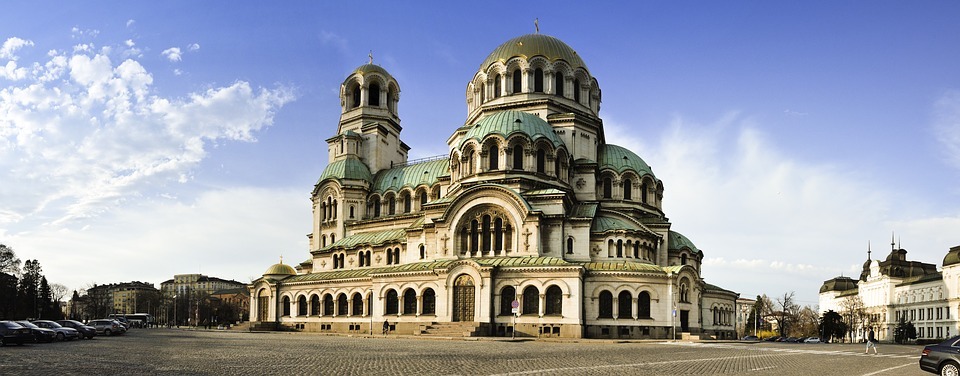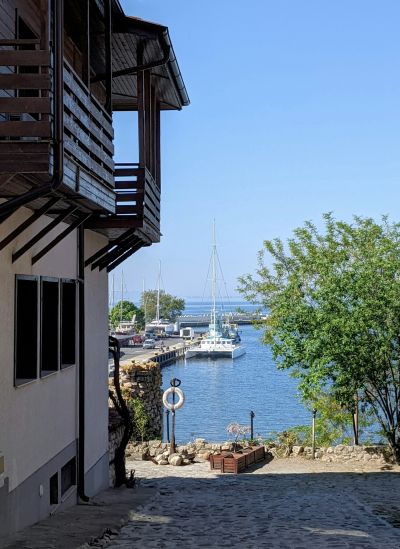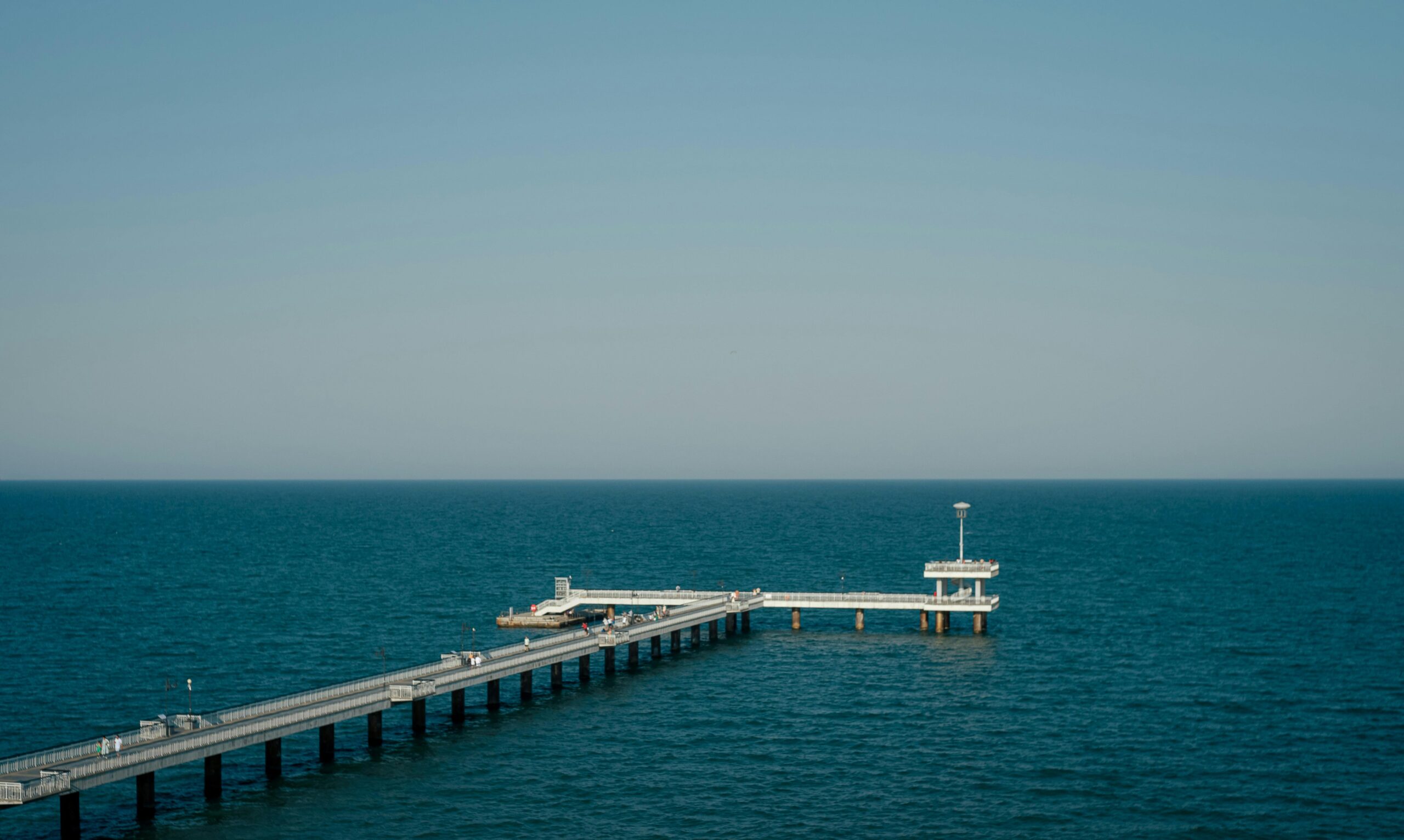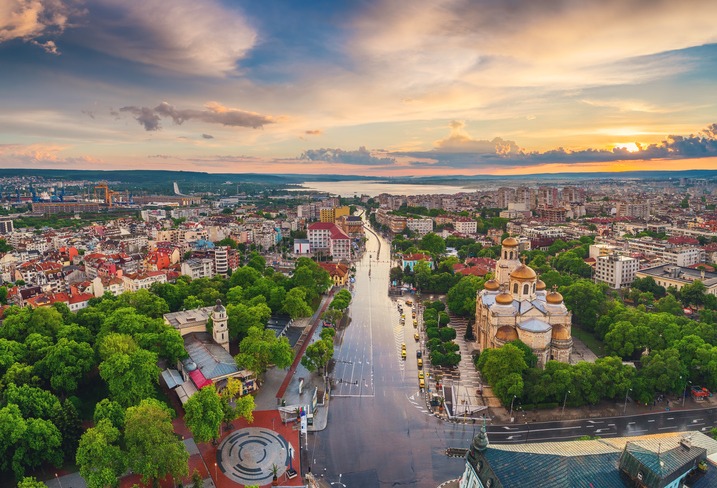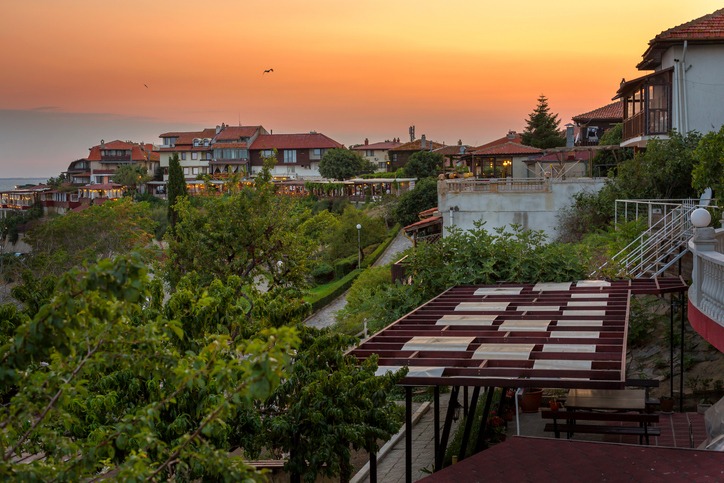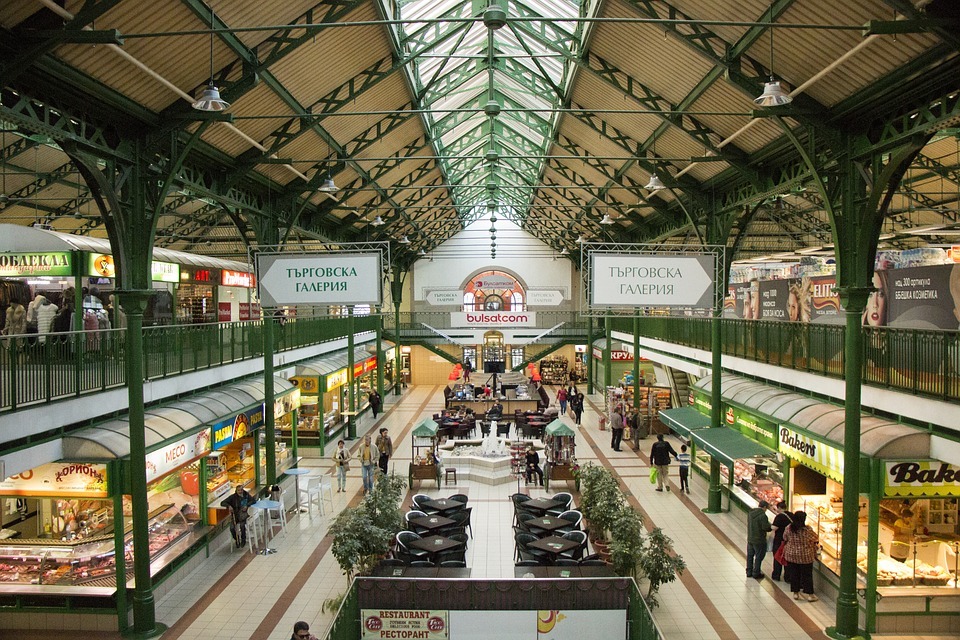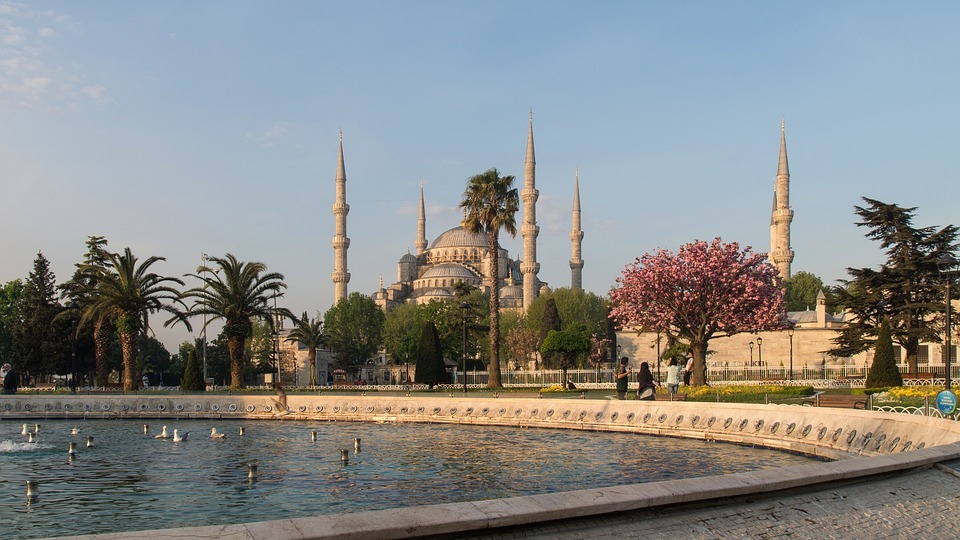Bulgaria, in itself, is not a spectacular country unlike its European neighbors in terms of places of interest. True, the country doesn’t have anything to match the striking Eiffel Tower, the magnificent Big Ben or the majestic Swiss Alps. But Bulgaria has its own unique brand of charm.
Sadly though, most tourist fail to see Bulgaria beyond its Communist past — you should take note that the country has moved forward since the early 1990s.
The country itself is very beautiful and it will surprise you with its awe-inspiring historical structures and natural beauty, particularly its gorgeous beaches.
There is another advantage of going to Bulgaria for a holiday. Bulgaria consists of mostly small cities and towns. Life there is generally slow-paced which is good because it allows you to take all the time to your heart’s content — going to interesting places, swimming and sunbathing on the beach, savoring its natural wonders and mingling with the locals as well as learning their culture and way of life. In other words, Bulgaria is an ideal place to get away from all the everyday stress.
The most interesting sights in Bulgaria are located deep in the country. To get to them is quite expensive and would take you a bit of time and effort. That’s why most tourists choose to visit only areas which can be easily seen along the coast.
For avid history lovers, you will be having your hands full once you set your foot in this amazing country.
What beach resorts are worth seeing?
Among seaside resorts we liked most of all Nessebar, Burgas, Varna, Pomorie and Balchik. Let’s try to estimate basic pros and cons of each of these resorts, write down a brief description of their sights and add a lot of photos.
The sights of Nessebar – what is worth seeing?
Nessebar is one of the oldest cities in Europe. Located on a peninsula, Nessebar is rich in perfectly preserved historical remains that remind of the country’s glorious and complicated past. Because of this, UNESCO has inducted Nessebar to its World Heritage Site list.
The peninsula itself is quite small, but you can walk through its narrow streets for hours. Walking along stone-paved walkways and viewing old Bulgarian houses and churches, you will not even notice how time flies. It is as if you are stepping back in time. It also feels like you’re walking in a vast, open-air museum
When you go to old part of Nessebar, check out the surviving ancient churches — they will be worth your while. Only one of these churches still functions in its fundamental purpose, as the rest are either partly destroyed or functioning now as mini-museums.
Okay, Bulgaria has at least one thing to match the more famous landmarks in Europe. Nessebar has its own “Colosseum,” although less imposing (but that does not mean less interesting). You can see the ruins of a majestic ancient Greek amphitheater, which is one of Nessebar’s most famous and important landmarks.
Do not miss:
- A selection of photos from Nessebar with captions to them.
- The sights of Old Nessebar – what can be seen in the ancient city
- Churches in Nessebar – their photos and descriptions
- A selection of the most interesting beaches of Nessebar
The sights of Burgas and a few words about shopping in this city
Burgas – a major port city in the southern part of the Bulgarian coast. Of course, there are a lot of churches that are worth visiting. The Church of Cyril and Methodius, the Armenian Church and the Church of the Assumption are some of the churches that deserved our attention.
On the main street of the city stands a tall monument to Alyosha. Here, you can see organized installations which demonstrate the beauty of Bulgaria.
If you walk to the sea, you will surely come out to a large and beautiful seaside park. It stretches several kilometers along the coast. There are benches for rest, sculptures, cages for dog walking, bike paths, clubs and many more interesting things.
On the north side of the park, you can see an exhibition of sand sculptures, which are made by professional and amateur sand sculpture hobbyists from around the world. Themes of the exhibition change every year.
Find out more: a detailed description of the sights of Burgas and many photos
The sights of Varna, the largest city on the coast
Varna is one of the largest cities on the coast of Bulgaria. The city is famous for its churches and parks and several places of interest (such as an eco-park). There are also supermarkets and shops. So you could say that Varna is a pretty urbanized seaside resort. There are also cons. the cleanliness of the sea water in Varna leaves much to be desired.
The majority of tourists come to Varna because of the Dolphinarium, which is considered one of the best on the coast of the Black Sea.
From Varna buses go in almost every corner of Bulgaria and even abroad. Not far from Varna, you can see ancient rock monastery Aladzha.
And if you suddenly do not like local beaches, we recommend you to go to Golden Sands – one of the most popular resorts in Bulgaria
The sights of Pomorie – our favorite city in Bulgaria
This small, quiet and pleasant seaside resort became our favorite — amazing sea views, low prices and friendly locals.
Among the sights of Pomorie we would like to highlight are the monastery of St.George, Lake Pomorie and the museum of salt.
Despite the city actively advertises the ancient Thracian tomb, we do not recommend you to visit it. There is nothing to see there; besides, the entrance fee was expensive — it would have been the equivalent to three more interesting museums. But you can look at it from the other side – next to the tomb, you can see a large plantation of kiwi, guarded by dogs.
Description and photos: our article about the sights of Pomorie
The sights of Balchik – a very beautiful botanical garden
We did not like Balchik that much. The city seems to be neglected, especially if you walk towards a bus station. In Balchik we found three small museums and two churches, which were looking quite modest.
But the city surely knows how to make up for the lack of other interesting sights. It boasts a true gem that is considered to be the main attraction in the coastal area of Bulgaria – the Botanical Garden of Balchik.
The garden is assembled in an amazing collection of rare plants, trees and flowers. Cacti and palm trees grow inside greenhouses. Small streams that gently flow down from the slopes of local hills become picturesque waterfalls.
The Botanical Garden of Balchik is considered to be a masterpiece of landscape art. Here, we’ve got to make a huge amount of gorgeous photos.
The palace of the Romanian Queen Maria is also situated within the garden premises. Honestly, it is much more beautiful and interesting outside than inside. Unfortunately, tourists are allowed only at first two floors; apart from antique furniture and a few paintings, there are nothing interesting to see there.
Read detailed description and photos of Botanical Garden in Balchik.
What do you want to see in Bulgaria?
If you plan to see not only the resort part of Bulgaria, you need to travel deep into the country. To make such trip is most convenient by a rented car or during excursions. Click the link to contact a trusted Bulgaria car hire service provider.
We do not recommend you to use public transport for one day – you will have to go with a change in Varna, and the time of departure and arrival of routes is not most convenient for tourists.
If you have time and money, but do not want to drive a car, it is advisable to arrange a small tour for 2-3 days. Hotel or apartment in major cities in Bulgaria in summer will cost much cheaper than on the coast. They can be booked with the help of AirBnB (a flat) or Hotellook (a hotel). You can move between cities by bus.
Veliko Tarnovo and Arbanassi – visit the ancient capital of Bulgaria, which is over 7000 years old
Veliko Tarnovo – one of the most visited sights in the continental part of Bulgaria. Despite the fact that the first settlements in this area really date back more than 7000 years, the annals of the town were first mentioned in 9th century.
Previously, the city was the capital of Bulgaria, Bulgarian tsars were crowned here and the residence of Archbishop used to be located here.
In 1393 the city was taken by Turks. A large part of the city’s attractions was destroyed and burned.
But it is really something to see in modern Veliko Tarnovo. We advise you to pay a special attention to the residence of Bulgarian kings and streets of the ancient city. It is interesting to walk around the city, located on the hillside. Buildings seemed to hang over each other, as in Italy or Greece.
Arbanassi – is an authentic Bulgarian village, which is the home of many ancient Bulgarian houses that have survived over the centuries. The interiors of these houses are also impressively preserved.
Kazanlak and Shipka – see mountains and the Valley of Roses
The Valley of Roses is the second most popular excursion in the mountainous part of Bulgaria.
It is worth to visit exactly in the period of blooming roses – since the second half of May and June.
In the Valley of Roses, the plants are grown for both red and white roses. There is also an annual rose gathering festival exactly during this period.
The roses are gathered for their fragrant essential oil, which is used for commercial purposes. One of the popular products coming out of these roses are cosmetics.
Plovdiv and Bachkovo – a beautiful city and an ancient monastery
Plovdiv is a major industrial city in Bulgaria. If you look at Bulgarian products in supermarkets, almost half of them are made exactly in Plovdiv.
The city is a mixture of both modern and ancient, like in many cities and towns in Bulgaria. It is one of the oldest cities in Europe and the largest industrial centers in Bulgaria. Like Rome, Plovdiv was built on seven hills.
Bachkovo Monastery – the second largest monastery in Bulgaria. Founded in 1083, the old buildings are impressively preserved. There, you feel only the serene atmosphere as it is expected in holy places such as this.
Sofia – the capital of Bulgaria
Sofia is the capital of Bulgaria. Despite the fact that it is located quite far from the seaside and it is difficult to get into the city (it is necessary to to travel almost a whole day), it is a very interesting place to visit.
City residents are very careful to preserve sights. For example, in a modern ordinary subway station you can find preserved stone or brick masonry, which dates back to over a thousand years ago.
While the city doesn’t have spectacular landmarks in the vein of the Eiffel Tower or London Bridge, Sofia offers lots of interesting buildings. The funny thing is that these buildings do not go well together in terms of history, architecture and aesthetics.
For example, you can see some ancient Roman ruins; the next, there’s a magnificent 19th-century Eastern Orthodox church built in revivalist Neo-Byzantine style; then there’s a Neoclassical-style building; and then only within a few meters away you can spot some drab-looking Socialist-era apartment buildings. Post-Communist modern skyscrapers have also begun to rise in the city. So really, Sofia is an interesting place to see such various architectural styles.
You can also find a handful of parks in Sofia for some urban oasis, including the City Garden, Doctors’ Garden and the Borisova Gradina.
From Bulgaria to Istanbul – the largest city in Europe
Istanbul is the only city that is located between Europe and in Asia.
The city has an ancient history – once it was the capital of the Byzantine Empire. During that time, Russian ambassadors were so impressed with the city, that they decided to accept Christianity on the territory of Ruthenia.
Among the sights of Istanbul we would like to highlight Hagia Sophia and The Sultan Ahmed Mosque (or The Blue Mosque). They are two fantastic temples, which are just opposite to each other. The former sultan’s palace and harem are also among the interesting places to visit.
As you probably know, Istanbul is the capital of Turkey. Together with exciting attractions here you can see also markets – shopping in Turkey is interesting, but specific.
There are a lot of sightseeing options in Istanbul – from shopping for one day, to visiting the city and its attractions with 3 nights in Istanbul.
Is it better to do DIY travel or choose guided tours?
If going to the coastal cities is your main agenda, then going by public transport is not just possible, but also highly recommended. It is cheaper and therefore it saves you a lot of money; plus, you will not be limited to a timeframe which is usual in guided tours. In that way, you will be able to linger a bit longer in a place that you particularly like.
But keep in mind that buses go from point to point, so you will not be able to see a lot of sights, especially the ones that are located far away from the usual tourist spots. For instance, public buses won’t drop you off to the more interesting places such as the Pobiti Kamani (“Stone Desert”), Aladzha Monastery, Kalikra, the Ropotamo valley and Ravadinovo Castle. Perhaps you can do that instead by choosing a rented vehicle.
If you prefer to see Bulgaria seriously and to visit Sofia and Veliko Tarnovo, for example, you should think about buying of an excursion – it turns out to be much more convenient.
Other recommended articles to read:
- Which is better in Bulgaria: an independent tourism or an excursion?
- What to see in Bulgaria? What sights to see and how to reach them?
- Pros and cons of holidays in Bulgaria – our view
- Which resort to choose to see the sights?
- Our reviews about the holiday in Bulgaria, Nessebar
- An overview of the most popular resorts of Bulgaria
- Our hiking along Bulgaria – 20 km, 5 cities and fantastic beaches.
